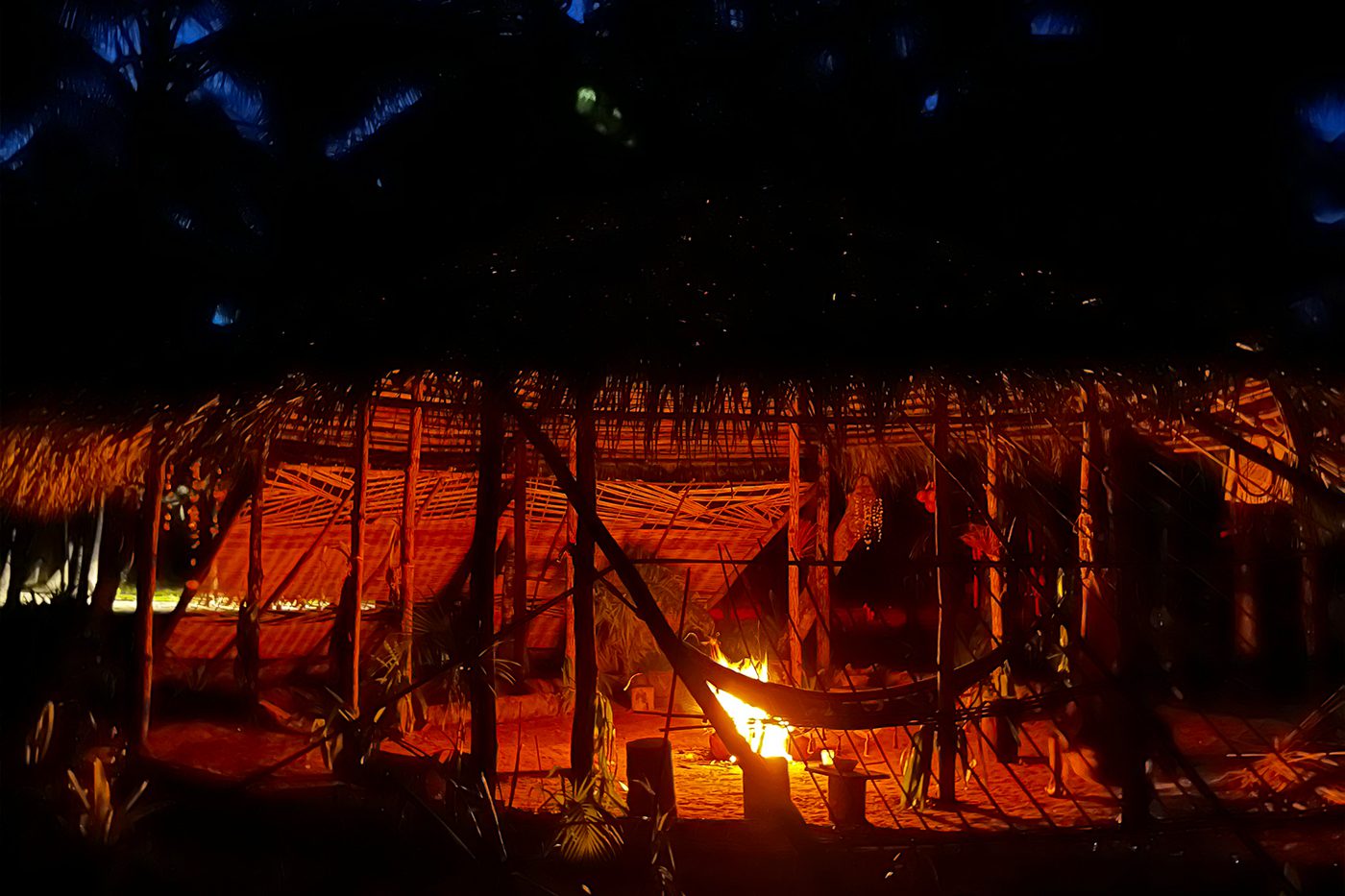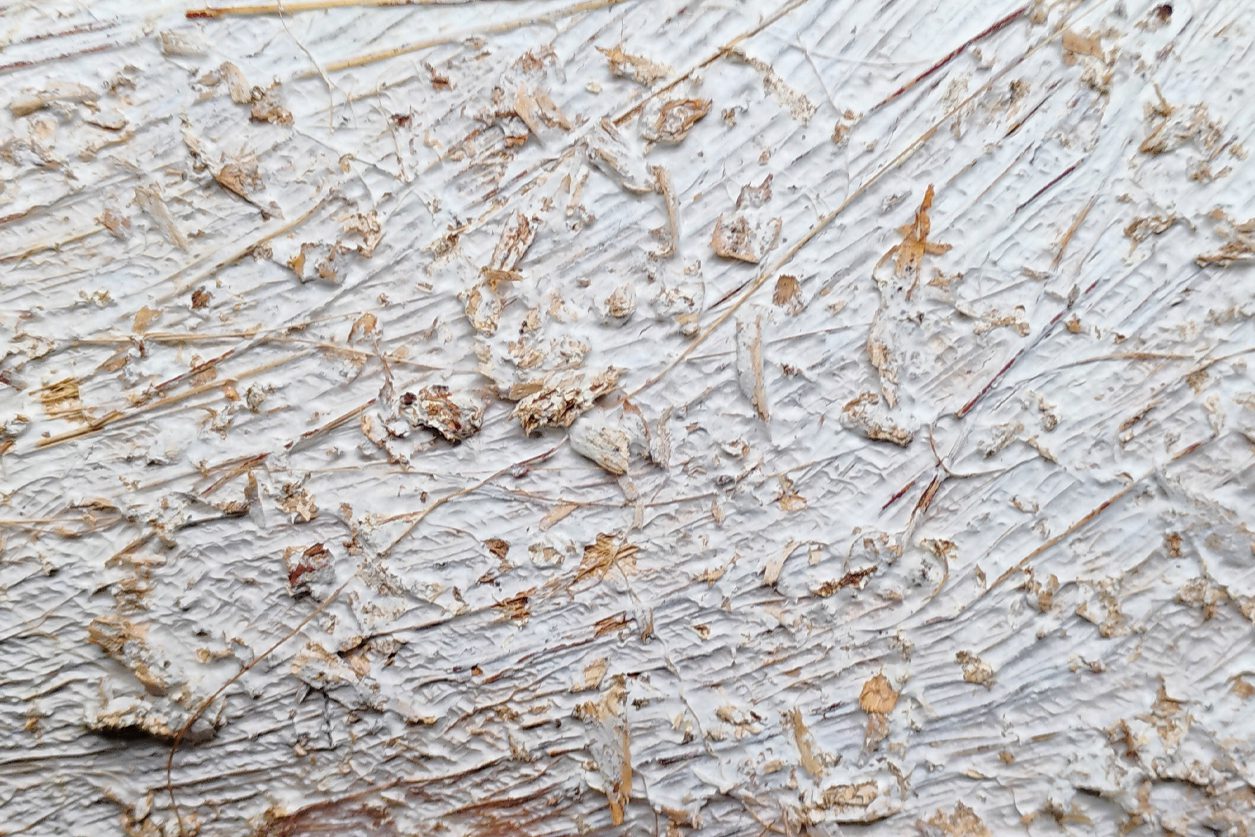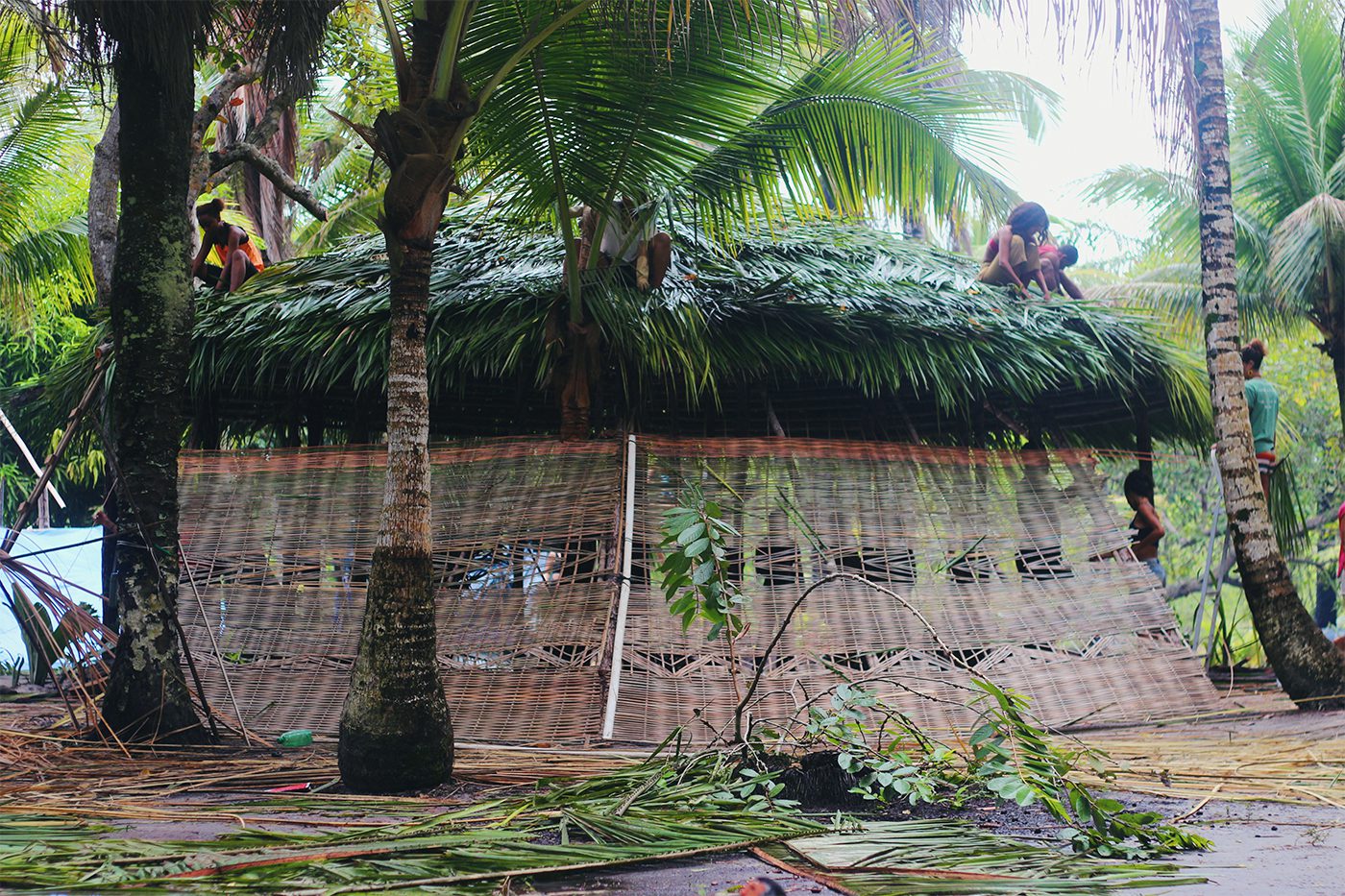Project implementation: Brazil
Project development: Brazil
The Tupinambá Womb Maloca is a living, symbiotic, and metamorphic form of architecture. Its form consists of a central space for the hearth, structured on double radial supports, with two laterally woven "skirts" connecting the roof to the ground, creating interior gardens that form intimate and exterior spaces that mark its entrances. Built in partnership between Floresta Cidade—an extension, teaching, and research project at FAU UFRJ—and Levanta Zabelê, the Ancestral Research and Innovation Center of the Tupinambá of Olivença, in southern Bahia. Zabelê is an Indigenous university led by women, and its principles are the exchange of knowledge, reconnection with Mother Earth, and the decolonization of territories.
Made with others—human or otherwise—it was constructed by many hands, enchantments, drawings, prayers, magic, measurements, stories, and efforts. A participatory architecture that provokes metamorphosis in those who create it, undoing colonial design attitudes. During construction, we lived collectively, shared the same food, bathed in the same waters, and shared the same territory, in an attitude of transversal coexistence, something nearly impossible in cities. This experience created a collective affection between the group and the territory, fostering a deep connection with nature and mutual respect, honoring the different beings that inhabit us and the exchange of knowledge among all living beings.
The symbiotic relationship with the landscape manifests itself not only in the visual continuity between the pillars and the existing trees, but also in the invention of materials. Driven by a desire for interspecific creation, we experimented, in partnership, with the production of mycelium tiles using coconut straw from the area. We improvised an ancient innovation laboratory and created fabrics from these straws, which we nourished along with fungal roots (mycelium) in a dark, humid environment. As the fungus colonizes the straw, it produces a waterproofing material, testable as a tile—reinforcing the existing straw—or as a lining, innovating the finish. The tests are not yet complete.
The Malaca Útero Tupinambá is a building-entity that is born, surprises, and happens. A living architecture that gains autonomy in the process and surprises us with the stories that emerge. The maloca houses our energies in its pillars, the metamorphoses of each of us in the fire at its center—which resembles a beating heart—and points to possible paths for contemporary design in Brazil. We are learning from indigenous peoples how to design and build a cosmic dwelling, including with the development of classrooms at FAU UFRJ.
The architecture of this cosmic dwelling can be felt in this maloca/roofing/skirt/process that, instead of isolating our experience of inhabiting the galaxies, connects it, extending the sky into a starry floor filled with affective experiences.




